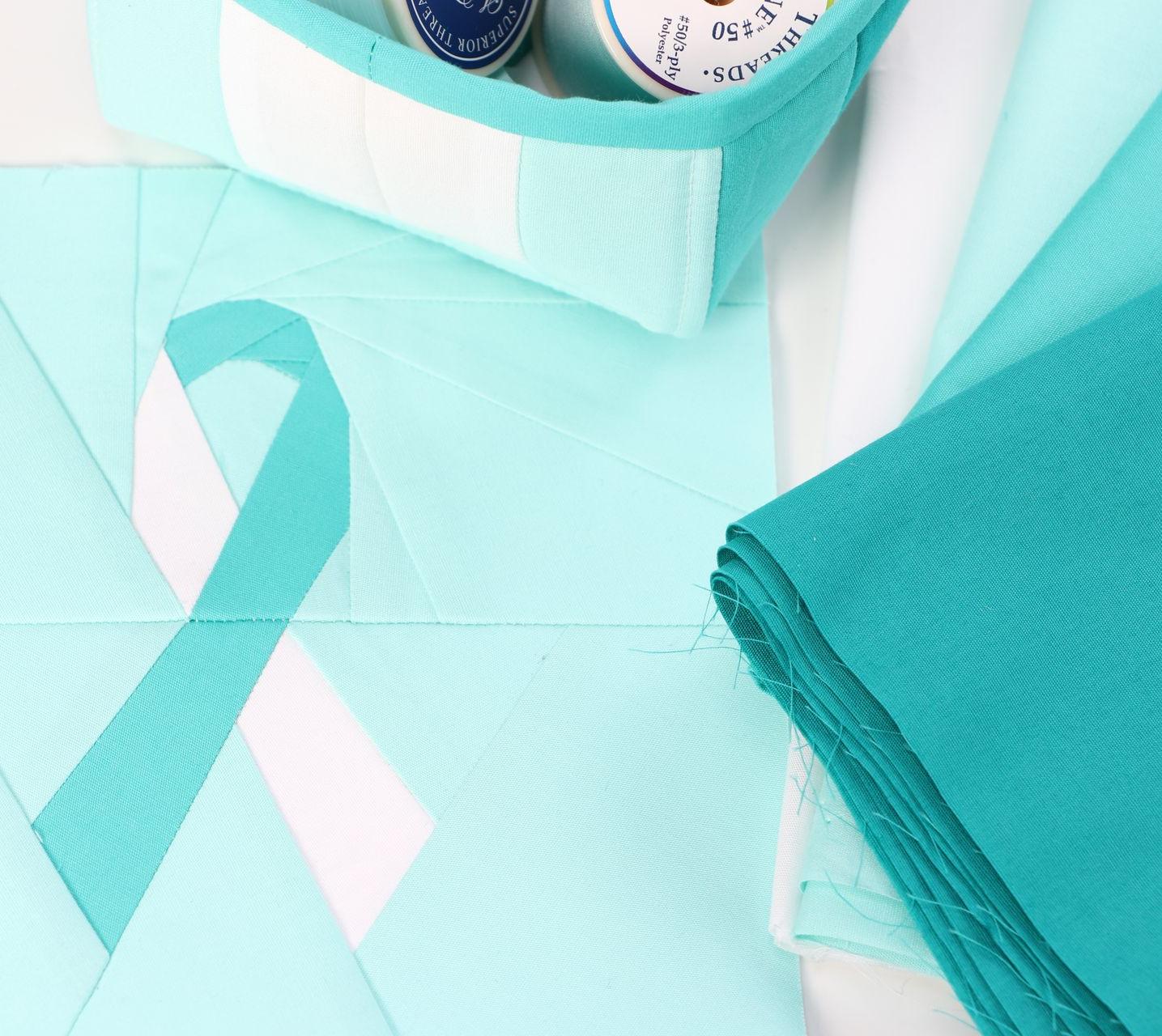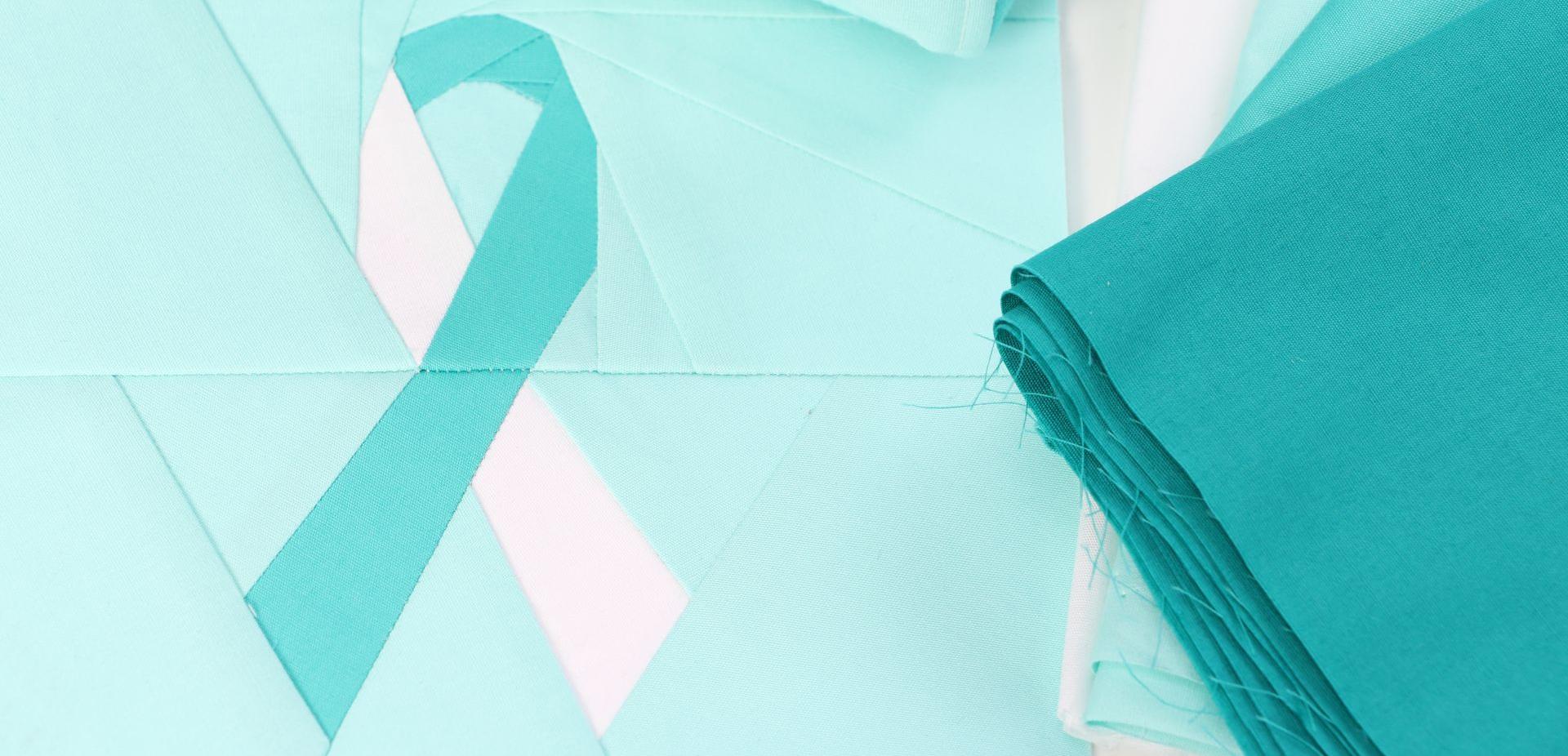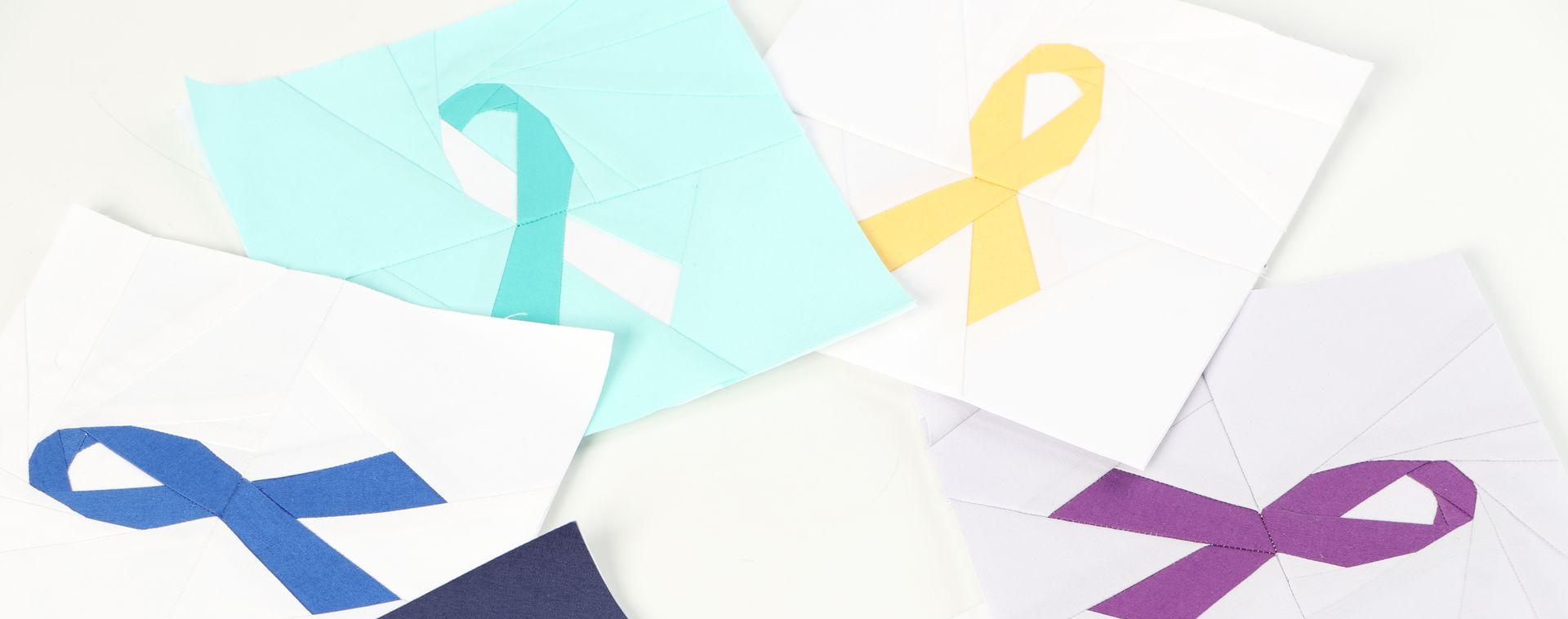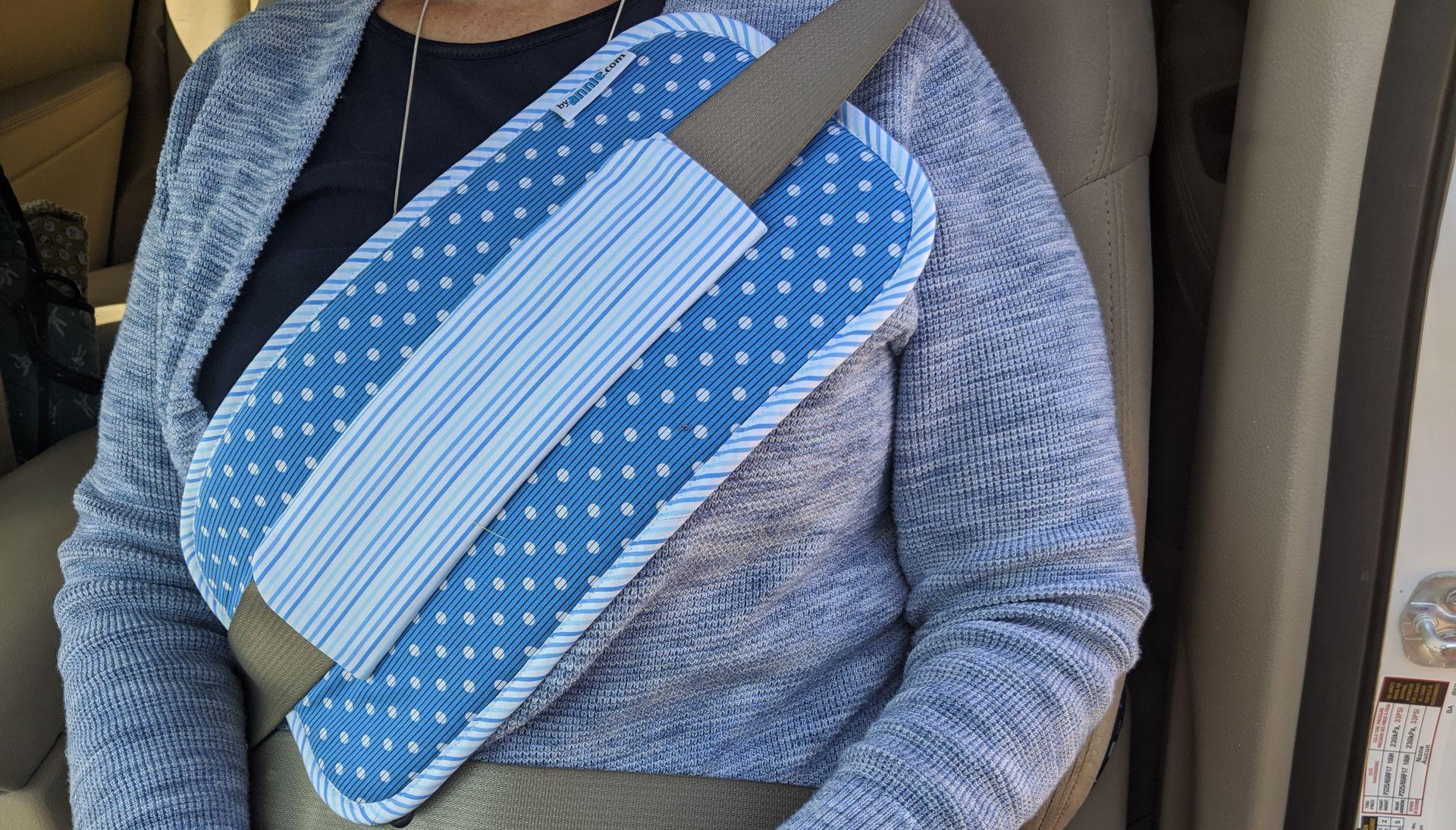The entire calendar has been set apart into days, weeks, and months to highlight ways to prevent and raise awareness for different types of cancer. This begins right away in January with the entire month being dedicated to raising awareness for cervical cancer, and January 11th being Less Survivable Cancers Awareness Day. Thankfully, cervical cancer is not among these less survivable cancers. In fact, cervical cancer "is one the most successfully treatable cancers" (cancer.org). It is also one of the most preventable.
Are you a sewist looking for ways to spread cancer awareness? Check out our FREE Cancer Awareness Course full of patterns and videos to inspire your next project.
What is Cervical Cancer?
Cervical cancer is formed in the cervix, the lowest part of the uterus. While cancers like melanoma, sarcoma, lymphoma can form in the cervix, the most common types of cervical cancer are squamous cell carcinomas or adenocarcinomas. One cause that often leads to cervical cancer is the human papillomavirus (HPV).
To prevent against cervical cancer, women can practice safe sex by using a condom during sexual activity and receiving a HPV vaccine.
The vaccine is most effective if given at an age range of about 11-26. In addition to using these methods to prevent the spread of HPV, woman can get regularly tested for HPV.

Men can help support cervical cancer prevention by also getting vaccinated against HPV. It's an important step in reducing the spread of the virus to future partners and it helps protect men from other HPV related health issues.
From the National Cancer Institute, "Nearly all people who are sexually active will become infected with HPV at some point in their lives. Most HPV infections go away on their own within a year or two as the immune system controls the infection. These short-term infections do not cause cancer."
There are several ways to screen for cervical cancer. As mentioned earlier, HPV tests are a good way to know if you have an infection that might lead to the cancer. From the ages of 25-65 the American Cancer Society recommends getting a HPV test every 5 years. In addition to HPV testing, cervical cancer can also be discovered during regular Papanicolaou (Pap) tests. Cervical cancer is usually treatable if detected early so these tests are essential for prevention.
"The most important thing to remember is to get screened regularly, no matter which test you get." (cancer.org)

Besides HPV, cervical cancer has many other known risk factors like poor diet, smoking, and sexually transmitted infections (STI's) like HIV which compromise the immune system.
Additionally, women who gave birth before the age of 17 are twice as likely to get cervical cancer later in life than women who had their first full-term pregnancy after the age of 25.
Certain medications have also been linked to a higher rate of cervical cancer. Long-term use of oral contraceptives increases the risk of cervical cancer, but the risk level goes back to normal once a woman stops using the contraceptive.
Women whose mothers took the DES hormone, a synthetic form of estrogen, while pregnant are at a slightly higher risk of developing cervical cancer. Thankfully, this hormone is no longer prescribed during pregnancy (wheelsforwishes.org).
What is Ovarian Cancer?
Although Ovarian Cancer Awareness Month is in September, every time you wear teal is a good time to spread awareness about ovarian cancer. While ovarian cancer is rare, it is the leading cause of death from cancer of the female reproductive system and the fifth leading cause of cancer death in women (cancer.gov).
Ovarian cancer is one of the hardest cancers to detect and while there are constant advancements in medical technology, researchers have yet to find a significant way to detect this cancer.
Even those at higher risk of developing ovarian cancer (those with a family history of ovarian, breast, or colorectal cancer) have no completely reliable way to detect this cancer in its earliest stages.
When ovarian cancer is detected early, it has a 93-97% 5-year relative survival rate. That survival percentage decreases quickly if the cancer is found in later stages. Unfortunately, because symptoms can go undetected until later stages and there is currently no recommended screening procedure, ovarian cancer can often be fatal.

Medical research is constantly evolving and ovarian cancer treatment has advanced greatly in the last few decades. If you're concerned about the possibility of developing ovarian cancer, reach out to one of your local medical professionals.
While it's unclear what effect a lot of factors have on ovarian cancer, there is a strong correlation between full-term pregnancies and a lower rate of ovarian cancer. "The risk goes down with each full-term pregnancy. Breastfeeding may lower the risk even further" (cancer.org). Different forms of birth control like oral contraceptives, tubal ligation, and a short use of IUD's is also linked to reducing the risk of ovarian cancer.
How to Support?
There are countless ways to help support cervical and ovarian cancer patients. The easiest way is to keep the conversation going. Spread awareness by wearing teal and white ribbons this month, post on social media, and tell others of how they can support this cause. Consider making your next sewing project with teal and white fabrics.
If you have the means, donate to trusted organizations that focus on medical research and patient care like the National Ovarian Cancer Coalition (NOOC), the Foundation for Women's Cancer, and the American Cancer Society (donate here to have ByAnnie match your donation). If someone you know is being affected by one of these cancers, consider helping out with daily tasks like meals, childcare, groceries, or rides to appointments.
While cancer is scary, if we stand together as a community to support those fighting battles against cancer, whether it be as a patient, caregiver, or medical professional, we can make the battle a little easier for everyone.
Want to make a project to support cervical cancer awareness? Use the chart below to find teal and white solids from your favorite fabric companies.
Find solids for the whole year here.
Disclaimer
Any and all content produced and displayed by ByAnnie.com is for educational and informative purposes only; it should not and does not replace a diagnosis by a medical professional. Statements made by ByAnnie.com are not medical advice. If any questions arise, contact your doctor or other qualified professional. Unless stated otherwise, the opinions and statements made are not by medical professionals. Reliance and usage of ANY information from ByAnnie.com is done solely at your own risk. None of the staff members of ByAnnie are, or claim to be medical professionals. We urge you to consult with a medical professional to answer any questions or concerns that you may have. Stay healthy, stay safe, and happy stitching!
Resources
American Cancer Society's Page on Cervical Cancer - https://www.cancer.org/cancer/types/cervical-cancer.html
National Cancer Institute's Page on Cervical Cancer - https://www.cancer.gov/types/cervical
Wheels for Wishes' Page on Cervical Cancer Risks - https://www.wheelsforwishes.org/news/cervical-cancer-awareness-month-2016/
American Cancer Society's Page on HPV - https://www.cancer.org/cancer/risk-prevention/hpv.html
National Cancer Institute's Page on HPV - https://www.cancer.gov/about-cancer/causes-prevention/risk/infectious-agents/hpv-and-cancer
American Cancer Society's Page on Ovarian Cancer - https://www.cancer.org/cancer/types/ovarian-cancer.html
National Cancer Institute's Page on Ovarian Cancer - https://www.cancer.gov/types/ovarian




#SewPINK: Cervical & Ovarian Cancer